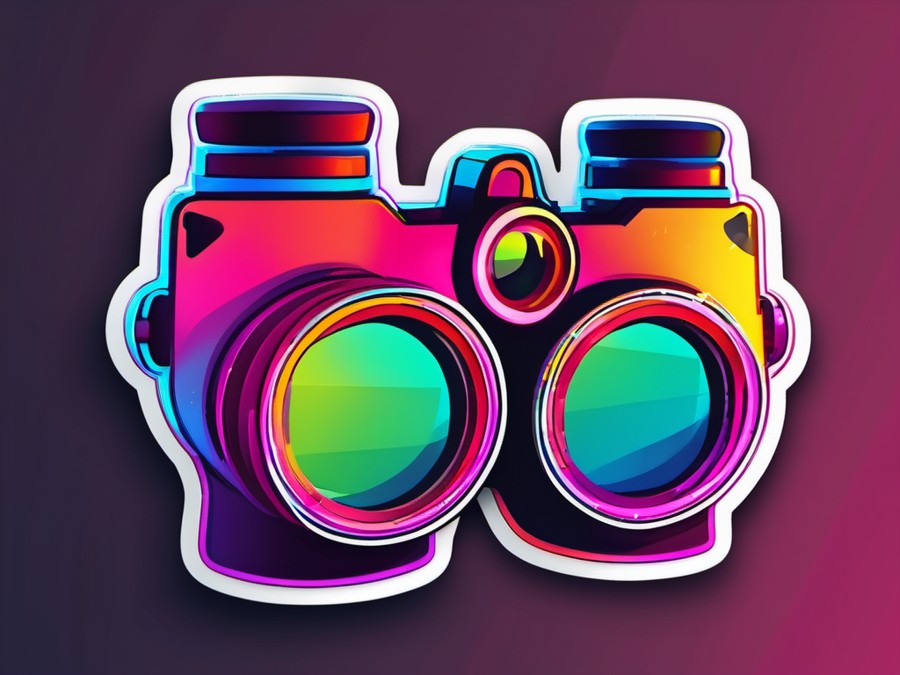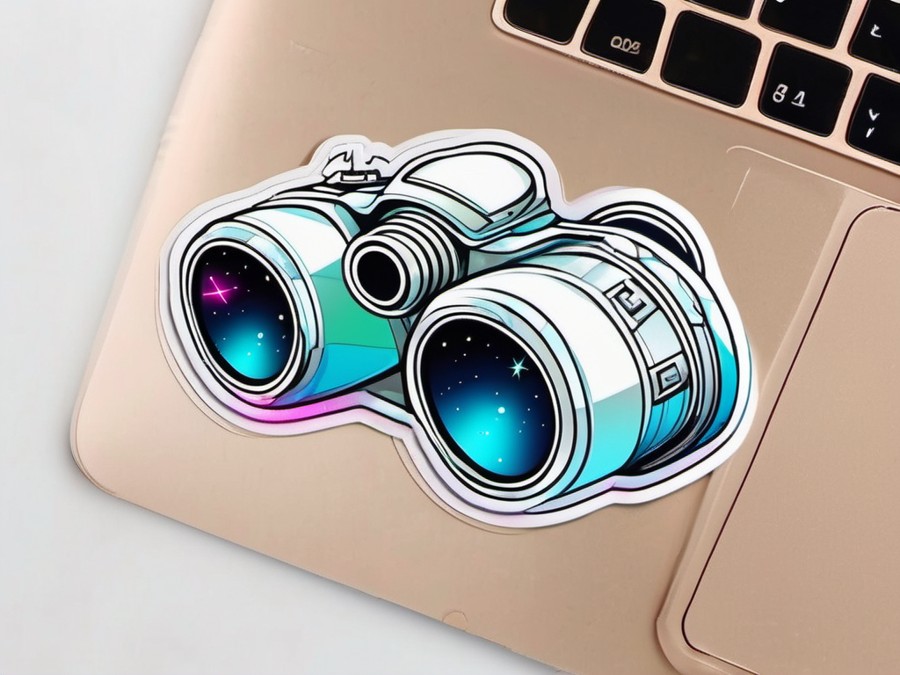· Charlotte Will · Binoculars · 10 min read
What is the ideal binocular size for travel?
Discover the ideal binocular size for travel to enhance your experiences without weighing down your luggage. Learn about magnification, lens diameter, and other key specifications to make an informed choice. Whether you're into wildlife spotting or landscape viewing, we've got you covered.

Choosing the right binoculars for your travels can make or break your experience. You don’t want to lug around a hefty pair that feels like a brick in your bag, but you also don’t want to miss out on the stunning views that make travel worthwhile. So, what is the ideal binocular size for travel? Let’s dive in and find out.
Binoculars: A Traveler’s Best Friend
Traveling is all about those memorable moments that take your breath away. Whether it’s a stunning landscape or an elusive wildlife encounter, having the right binoculars can enhance your travel experiences immeasurably. As a seasoned traveler, I’ve learned that size matters—not just in terms of practicality but also in ensuring you don’t miss those once-in-a-lifetime views.
What makes binoculars essential for travel?
Binoculars can transform a mundane view into a spectacular panorama. They allow you to get up close and personal with nature, from spotting rare birds in the Amazon rainforest to admiring the intricate details of ancient architecture. Plus, they’re great for sharing the view with your travel companions.
Understanding Binocular Specifications
Before we dive into finding the perfect size, let’s quickly cover some key binocular specifications.
Magnification power
This is the first number in a binocular spec (e.g., 8x42). Magnification power tells you how much larger the image will appear through the binoculars. For travel, 8x to 10x is usually ideal, as it balances detail with stability.
Lens diameter
The second number (42 in 8x42) represents the diameter of the objective lens. A larger lens allows more light in, resulting in a brighter image. For travel, 32mm to 42mm is generally sufficient and won’t add too much weight.
Field of view
This specifies the width of the area you can see through the binoculars, typically measured in feet at 1000 yards. A wider field of view makes it easier to spot and follow moving objects.
Size Matters: Dimensions and Weight
When it comes to travel, compactness is key. You don’t want binoculars that take up too much space in your bag or feel like a burden after hours of use.
The importance of compact binoculars for travel
Compact binoculars are designed to be as small and lightweight as possible without sacrificing image quality. They’re perfect for travelers who want to pack light and enjoy the journey hassle-free.
Optimal size range for travelers
For most travelers, 8x to 10x magnification with a lens diameter of 32mm to 42mm strikes the right balance between portability and performance. These binoculars are small enough to fit in a daypack or even a large pocket, yet powerful enough to capture stunning views.
Balancing Magnification and Portability
While higher magnification can seem appealing, it’s not always practical for travel.
How magnification affects size and weight
Higher magnification typically means bigger, heavier binoculars. More powerful lenses are needed to provide a clear image without introducing too much shake or blur. For travel, 8x to 10x is usually enough to see detailed views without needing a tripod.
Striking the right balance for travel
Travel often involves hikes, long walks, and unexpected adventures. You don’t want binoculars that are so heavy they become a chore to carry. Balancing magnification with portability ensures you can enjoy your travels without feeling encumbered by your gear.
The Impact of Lens Diameter
Lens diameter profoundly affects both image quality and binocular size.
How lens diameter influences image quality and size
A larger lens diameter means brighter, clearer images—especially useful in low-light conditions like early morning or dusk. However, it also means heavier binoculars. For travel, 32mm to 42mm offers a decent compromise between brightness and portability.
Choosing the right lens diameter for travel binoculars
When choosing your binocular size, consider the environments you’ll be in. If you’re often in low-light conditions, a slightly larger lens might be worth the trade-off. But if you’re mainly traveling in bright daylight, a smaller lens will do just fine.
Field of View: Why It Matters
A broader field of view can significantly enhance your travel experience.
What is field of view?
Field of view refers to the width of the area visible through your binoculars at a certain distance. For travel, you typically want a wider field of view to easily spot and follow your subject without constantly adjusting the binoculars.
How field of view affects your travel experience
A wide field of view is particularly useful for wildlife spotting and landscape viewing. It allows you to quickly locate your subject and keeps it in view even if it’s moving around. For example, if you’re on a safari trying to locate animals in the distance or want to capture the expansive beauty of a landscape, a wider field of view is invaluable.
Considering Durability and Ease of Use
Your binoculars should be reliable companions throughout your journey.
Why durability is crucial for travel binoculars
Travel can be tough on gear. Your binoculars might face extreme temperatures, humidity, and even the occasional drop or bump. Durable binoculars can withstand these conditions without compromising performance.
Ensuring your binoculars are easy to use on the go
Ease of use is also crucial. You want binoculars that are quick to focus and comfortable to hold, even with one hand. Features like rubberized grips and intuitive controls can make a big difference in how enjoyable your binoculars are to use.
Top Compact Binoculars for Travelers
Here are some recommendations based on different needs and budgets:
- Budget pick: Celestron 8x21 Compact Binoculars
- Mid-range pick: Nikon 8x25 Monarch ATB Compact Binoculars
- High-end pick: Swarovski CL Companion 8x25 Binoculars
Each of these offers a great combination of portability and performance, ensuring you don’t miss out on any travel highlights.
Additional Features to Look For
Beyond size, there are other features worth considering.
Waterproofing and fog-resistance
These features are invaluable for protecting your binoculars from the elements. Whether you’re on a boat trip or hiking in humid conditions, waterproofing and fog-resistance ensure your binoculars remain operational.
Image stabilization technology
For those who want extra stability without a tripod, image stabilization can be a game-changer. This feature reduces shake and blur, making it easier to capture clear images even in challenging conditions.
Comfortable straps and carrying cases
A good strap can make your binoculars more comfortable to carry, especially over long periods. Similarly, a protective case keeps your binoculars safe from scratches and other damage during travel.
Tips for Choosing the Right Binocular Size
Finding the perfect binoculars involves a bit of self-reflection.
Assessing your travel style and needs
Consider where you’re going and what you plan to do. If your travels involve a lot of hiking or wildlife spotting, you might prioritize lighter binoculars with wider fields of view. If you’re more into cityscapes and architecture, a slightly heavier pair with higher magnification could be beneficial.
Incorporating binoculars into your luggage efficiently
Smaller, compact binoculars are easier to pack. Look for designs that can fit into a daypack or even a large pocket. This way, you can keep your luggage light and maneuverable while still enjoying the benefits of binoculars.
Real-World Examples: Binoculars in Action
Let’s look at how the right binocular size has enhanced some travel experiences.
Success stories from travelers who chose the right binocular size
One friend, an avid hiker, swears by his 8x32 binoculars. They’ve allowed him to spot rare birds and enjoy stunning mountain views without feeling weighed down. Another traveler, who loves city trips, finds that his 10x42 binoculars let him admire architectural details from a distance, enhancing his appreciation for the urban landscape.
Lessons learned from those who didn’t
Conversely, I’ve seen travelers struggle with binoculars that are too big and heavy. One friend ended up leaving his large, bulky binoculars behind on a long hike because they were too cumbersome. Another found her high-magnification binoculars impractical for spotting quick-moving wildlife.
Common Misconceptions About Binocular Sizes
Debunking some myths can help you make a better decision.
Magnification is always better
While higher magnification can provide more detail, it also makes the image shakier and harder to keep steady. For travel, a balance is crucial.
Bigger is always better
Larger binoculars are not necessarily better for travel. They might offer more light and detail, but they’re also heavier and harder to manage on the go.
The Role of Binocular Size in Wildlife Spotting and Landscape Viewing
Size affects how you capture these moments.
How size affects your ability to capture the moment
For wildlife spotting, a wide field of view and quick focus are essential. You want binoculars that can quickly locate and follow moving animals without needing to constantly adjust the view. For landscapes, higher magnification can help you appreciate details from a distance.
Balancing size with your travel needs
Think about your primary interests. If wildlife spotting is a priority, lean towards binoculars with a wider field of view and quicker focus mechanisms. If landscapes are your thing, consider binoculars with a bit more magnification to capture intricate details.
Maintenance Tips for Travel Binoculars
Keeping your binoculars in tip-top shape during travel.
Protecting from damage
Always store your binoculars in a padded case when not in use. This protects them from scratches and other damages while you’re on the move.
Cleaning your binoculars
Regularly clean the lenses with a microfiber cloth to remove any dirt or fingerprints. This ensures clear viewing and extends the lifespan of your binoculars.
Avoiding extreme temperatures
Try to avoid exposing your binoculars to drastic temperature changes. Sudden shifts can cause condensation or even damage internal components.
Conclusion: The Perfect Binocular Size for Your Next Adventure
Finding the ideal binocular size for travel involves balancing portability with performance. For most travelers, 8x to 10x magnification with a lens diameter of 32mm to 42mm is the sweet spot. This size range offers a great balance between image quality and practicality, ensuring you can enjoy your travels without feeling weighed down by your gear.
Don’t forget to consider the environment you’ll be in and your specific travel needs. Whether you’re into wildlife spotting, cityscapes, or landscapes, the right binoculars can significantly enhance your travel experiences.
FAQs
Is there an ideal size for binoculars that suits all travelers?
- Not really. The ideal size depends on your specific travel needs and preferences. However, 8x to 10x magnification with a lens diameter of 32mm to 42mm usually hits the right balance for most travelers.
How do I decide between 8x and 10x magnification for travel?
- The choice depends on your primary interests. For wildlife spotting, 8x is often better due to the wider field of view and easier focusing. For landscapes, 10x can help you capture more details from a distance.
What if I’m going on a safari? Should I invest in larger binoculars?
- For safaris, 8x to 10x magnification with a wider field of view is generally more useful. Larger binoculars can be tough to manage in a moving vehicle and may not offer significant advantages in brightness if the safari is during the day.
Are there any health considerations when choosing binocular size for travel?
- Yes, if you have any neck or back issues, heavier binoculars might exacerbate these problems. Lighter, compact binoculars are usually a better choice for those with health concerns.
How can I protect my binoculars from damage during travel?
- Always store your binoculars in a padded case when not in use. Avoid extreme temperature changes and clean the lenses regularly to maintain clarity and extend their lifespan.
By following these tips, you’ll be well on your way to finding the perfect binoculars for your next adventure. Happy travels!




